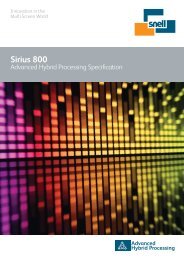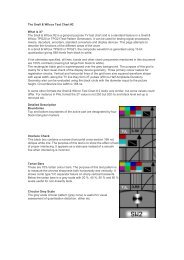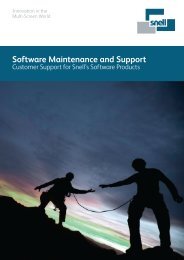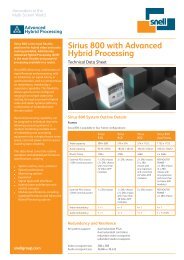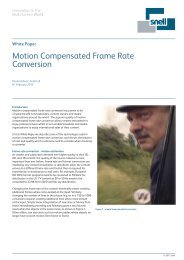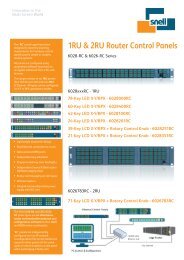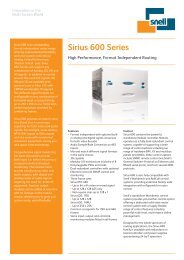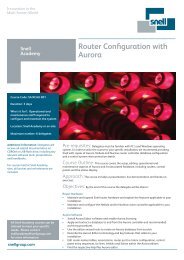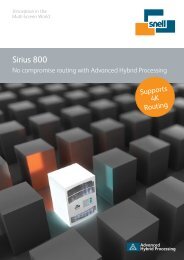The Engineer's Guide to Standards Conversion - Snell
The Engineer's Guide to Standards Conversion - Snell
The Engineer's Guide to Standards Conversion - Snell
Create successful ePaper yourself
Turn your PDF publications into a flip-book with our unique Google optimized e-Paper software.
Sampling period<br />
Sampling<br />
frequency<br />
a)<br />
DFT<br />
b)<br />
0<br />
Frequency<br />
Time<br />
d)<br />
FT<br />
c)<br />
e)<br />
Fig 3.6.1 a) <strong>The</strong> windowed impulse response of a filter.<br />
b) <strong>The</strong> Discrete Fourier Transform of the impulse contains as many<br />
frequencies as the window has points.<br />
c) Each discrete frequency in the DFT represents a sinx/x spectrum in<br />
a continuous transform.<br />
d) <strong>The</strong> sinx/x pulse is the transform of the rectangular window.<br />
e) <strong>The</strong> continuous spectrum is obtained by adding the sinx/x curves of<br />
each of the discrete spectral lines. <strong>The</strong> origin of s<strong>to</strong>p-band ripple<br />
should be clear.<br />
<strong>The</strong> values of the samples in the window can describe an impulse response as<br />
shown in Fig 3.6.1a). Fourier analysis tells us that the spectrum of discrete signals<br />
must also be discrete, and the number of different frequencies in the spectrum is<br />
equal <strong>to</strong> the number of samples in the window. <strong>The</strong> spectrum of a) is shown in b).<br />
As a consequence, the frequency response of the filter can be specified in a finite<br />
number of evenly spaced places. In a two dimensional filter these places will form a<br />
rectangular grid. In order <strong>to</strong> return <strong>to</strong> the continuous time domain from discrete<br />
samples, each sample is replaced by a sinx/x impulse. <strong>The</strong> same principle holds in<br />
the discrete frequency domain.<br />
43




